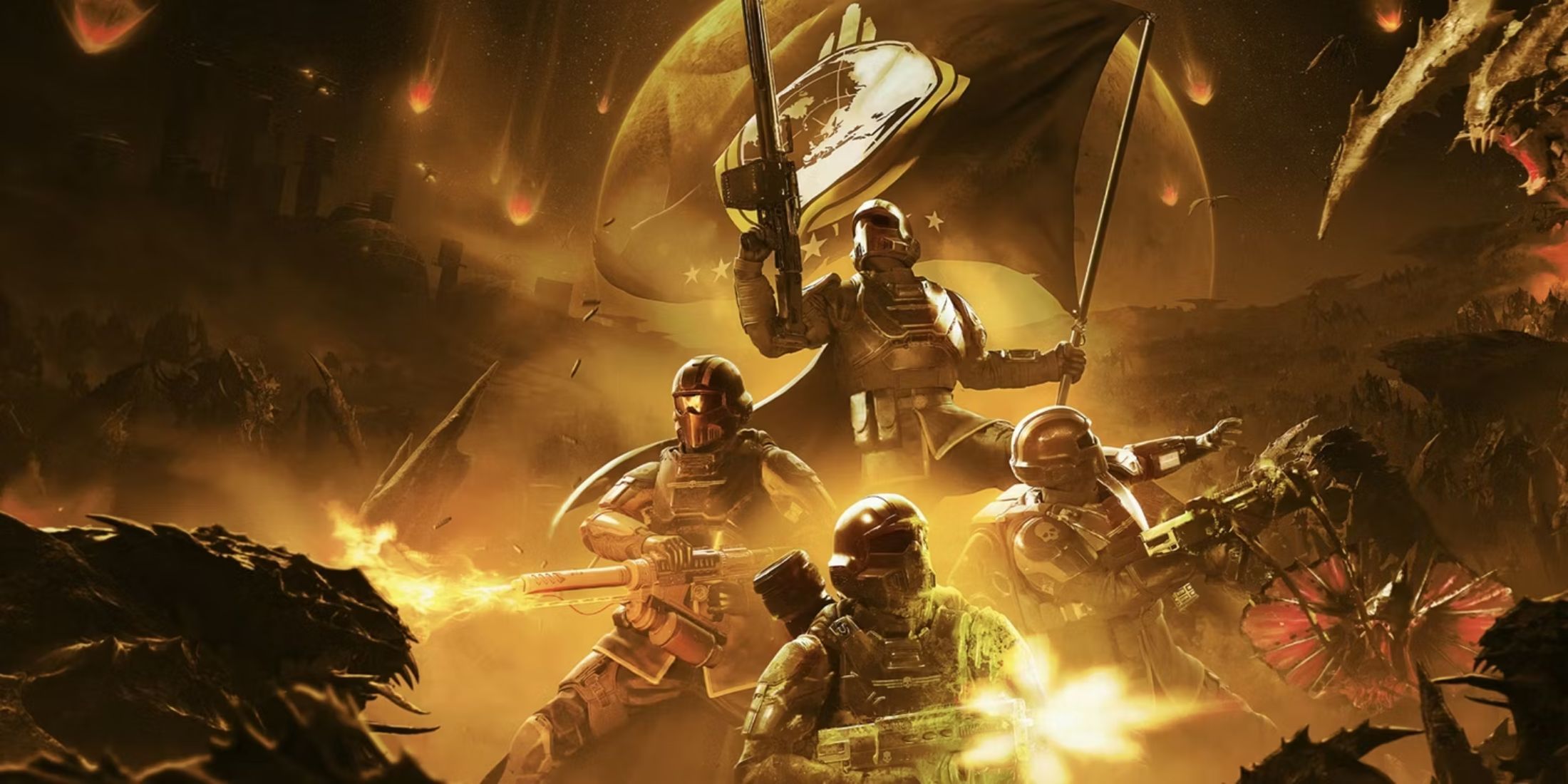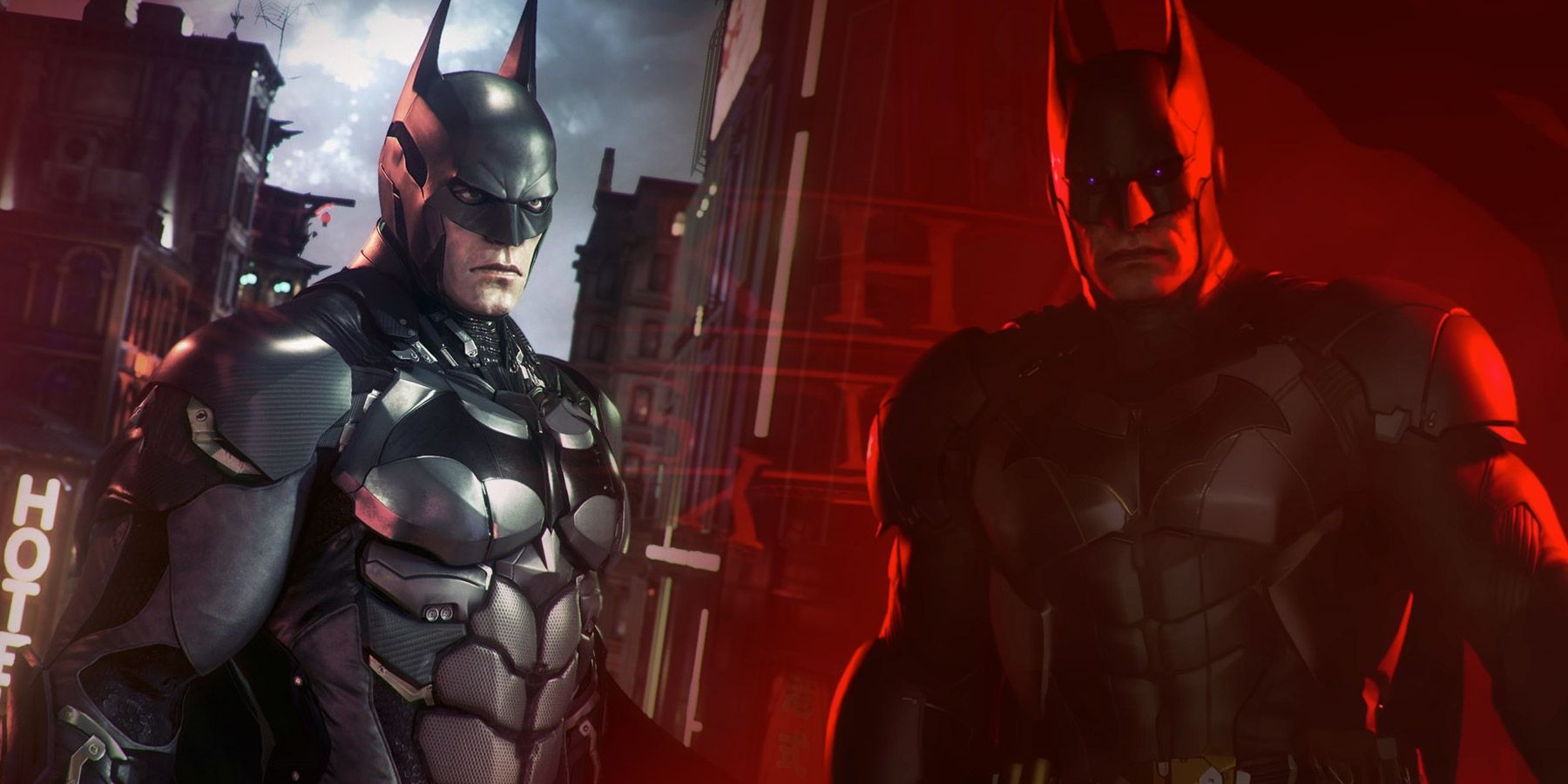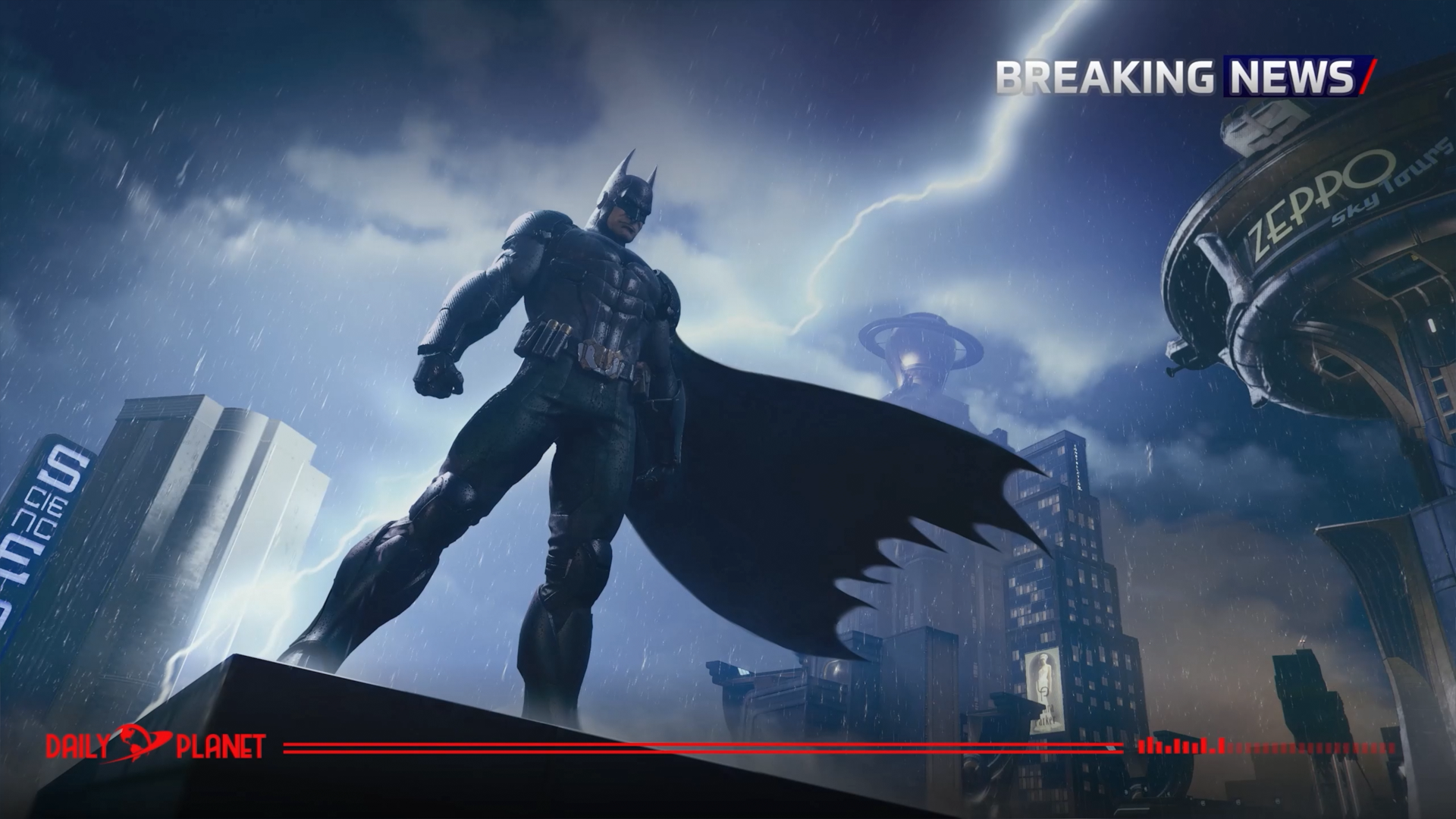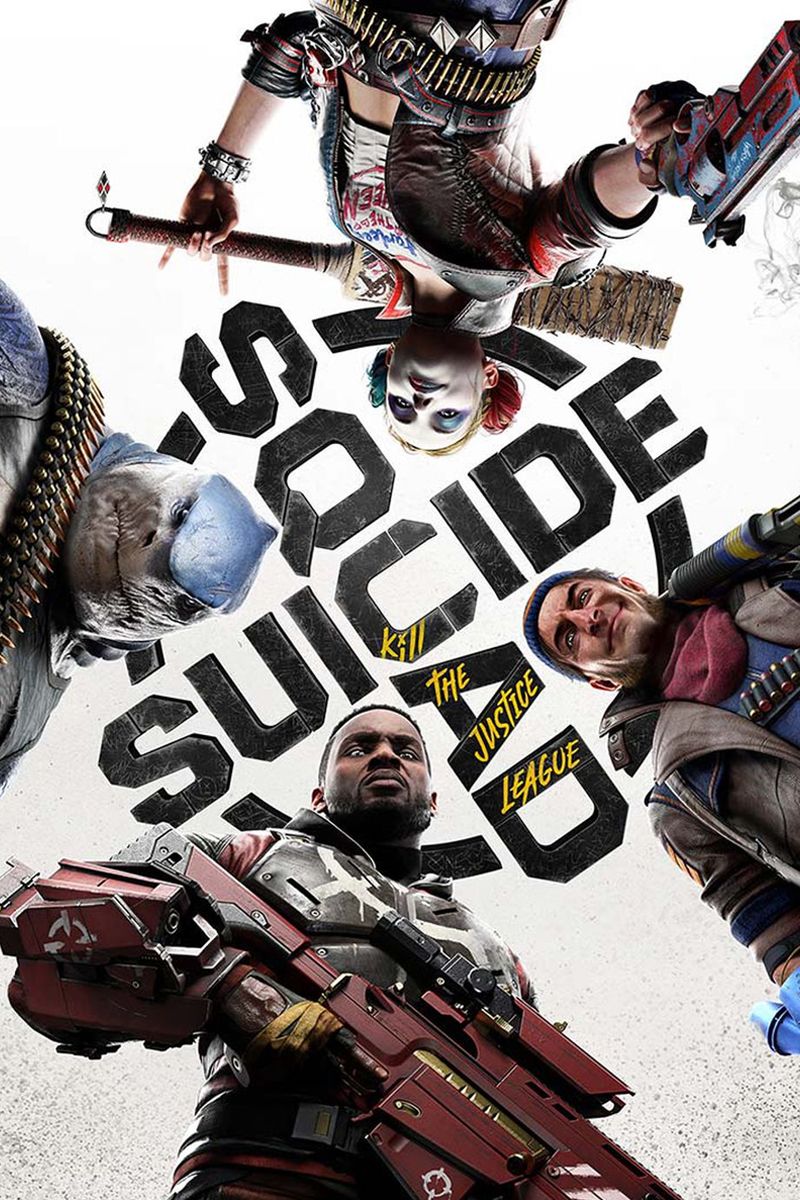Highlights
- Batman's role in Suicide Squad: Kill the Justice League is as an antagonist, but this doesn't mean he's a villain or deserves his fate.
- Batman's death in the game is tragic, as he is still under Brainiac's mind control and becomes a murderer corrupted by an insidious presence. This means the horrific plot of Arkham Knight came to fruition, even if it is Brainiac, not Joker, disfiguring and puppeteering Batman.
Major spoilers for Suicide Squad: Kill the Justice League ahead.
Batman is undeniably an antagonist in Suicide Squad: Kill the Justice League, being one of five bosses and one of four Justice League members infected by Brainiac that Task Force X is ordered to kill. However, this doesn’t essentially mean he’s a villain, nor does it mean he deserves his fate in Suicide Squad: Kill the Justice League.
Oddly, these circumstances echo the same story beats as in Batman: Arkham Knight, particularly when Batman’s Joker-infected blood began subsuming him into the homicidal clown once exposed to enough of Scarecrow’s fear toxin. This is a plot point that can be easily overshadowed by Jason Todd’s Arkham Knight and how overwhelmingly present his infinite militia is, but it’s crucially important and fluidly connects Rocksteady’s Arkham trilogy with an overarching throughline of Joker tampering with TITAN and the effect that had on him.
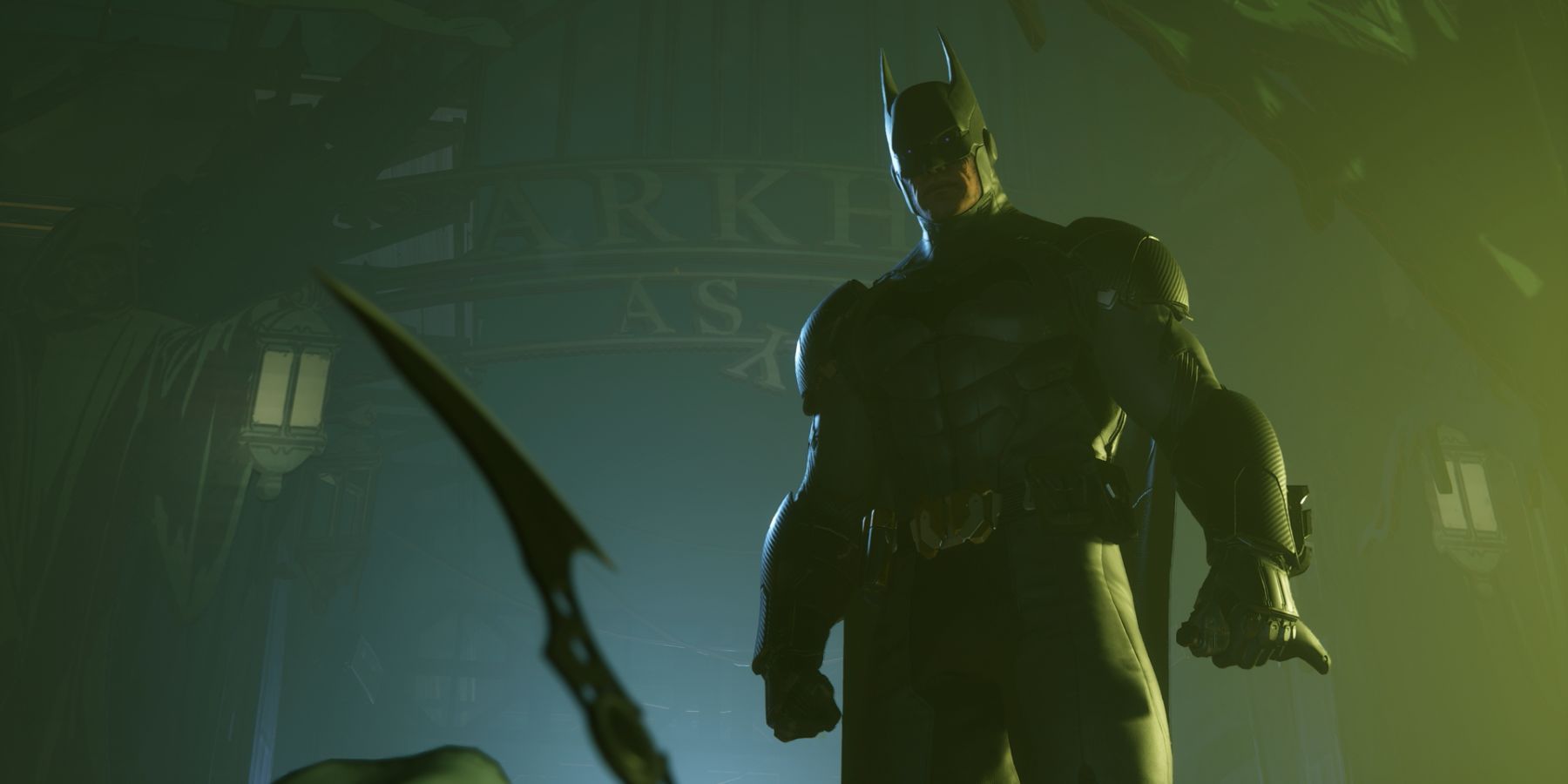
Batman’s Epiphany in Suicide Squad: Kill the Justice League is a Lesson Learned Too Late
Suicide Squad: Kill the Justice League represents a new chapter in Batman's life—one he seems content to leave his Bat Family for, in fact.
Rocksteady’s Batman Undergoes Huge Changes Between the Arkham Series and Suicide Squad
Cut to Suicide Squad: Kill the Justice League, taking place five years after Arkham Knight’s events, and Batman’s life couldn’t be any more different. He’s now unmistakably a hero in the eyes of the public if he wasn’t already, and he no longer lurks around in shadows since he has Superman, Wonder Woman, Green Lantern, and Flash to depend on. Batman’s true identity is also public knowledge in the present day with his whole backstory unveiled and honored in Metropolis.
Suicide Squad: Kill the Justice League is the End of the Arkhamverse’s Batman
Rather, when Batman appears in the flesh for the first time in Suicide Squad: Kill the Justice League he is a terrifying pursuer and that fear is reinforced by the player’s knowledge of how Batman prefers to hunt criminals, whom players take the role of in Task Force X. In more ways than one, both literally and figuratively, Arkham Knight truly is the final Batman: Arkham game—unless a prequel is announced in the future, that is. This is true in the literal sense because Suicide Squad: Kill the Justice League no longer features Batman in a playable role as the protagonist and he is killed in the game’s story, meaning a future sequel couldn’t feature him even if another actor was replacing Kevin Conroy.
Of course, this doesn’t mean Rocksteady can’t reach its hands into an Elseworld dimension and pluck out a new Batman like it’s done with a new Joker as the first post-launch DLC character debuting in Suicide Squad: Kill the Justice League .
Rocksteady must have known it would be moving on definitively from Batman—and maybe Batman’s corner of the DC mythology for the most part—when it came to Suicide Squad: Kill the Justice League and that Task Force X’s adventures were where the studio wanted to concentrate its efforts now, regardless of who ends up recruited as part of ARGUS’ ephemeral and half-baked team of super-criminals. As to whether Batman dies a hero or lives long enough to see himself become a villain, the answer is more complicated than either distinction.
Is Batman Evil in Suicide Squad: Kill the Justice League or Possessed by Evil?
Batman’s death isn’t sensational or remarkable in the way that his Justice League companions’ were as he’s plopped down on a bench and put down. Bruce Wayne also isn’t free from Brainiac’s mind control when he dies, which is profoundly tragic since he ended up becoming what he fought valiantly to prevent in Arkham Knight: being possessed by an insidious presence disfiguring him into a murderous villain. Batman also commits murder as seen at the beginning of Suicide Squad: Kill the Justice League’s nostalgic and suspenseful journey down memory lane, revisiting Batman’s story from Arkham Asylum to Arkham Knight through pre-recorded audio logs and cardboard standees in an elaborate Batman Experience exhibit.
Batman’s technically killed before in the Arkhamverse, too, whether intentionally or not, but using batarangs lethally was a new endeavor for a Batman mind-controlled by Brainiac that players likely would have experienced if Joker’s incorporeal being managed to irreversibly wear Bruce’s body like a skinsuit. Unable to control his actions, Batman isn’t a traditional villain in Suicide Squad: Kill the Justice League and neither is Flash, Green Lantern, or Superman—it’s Brainiac who is the villainous mastermind.
The League is puppeteered and weaponized, making Bruce’s subsequent death a horrible tragedy. It doesn’t help that Harley Quinn self-righteously monologues in his face before shooting him, either.
Criminals antagonize their heroic arch-nemeses because they humiliatingly beat them and throw them in prison, and despite how awfully dismissive Bruce is of Harley throughout the Arkham games he would never be considered more morally grey than her based on her actions throughout the Arkhamverse. Moreover, this stance is hypocritically contradicted by Rocksteady’s portrayal of Wonder Woman.
Bruce Wayne also isn’t free from Brainiac’s mind control when he dies, which is profoundly tragic since he ended up becoming what he fought valiantly to prevent in Arkham Knight : being possessed by an insidious presence disfiguring him into a murderous villain.
Suicide Squad: Kill the Justice League’s Wonder Woman Shows Where a Blurred Line is Drawn
It’s upsetting that Brainiac is never seen as the true villain in Suicide Squad: Kill the Justice League until it’s far too late. But because the game is told from the perspective of the characters who are traditionally antagonists, there’s no reverence held for the downfall of the Justice League—at least, that would have been true, if not for how the game handles its depiction of the Themysciran.
Wonder Woman’s death is given solemn, respectful treatment even though she’s still a Justice League member, presumably because she wasn’t brainwashed. The Justice League being brainwashed now shouldn’t have made a difference in terms of how TFX perceived them because they’re supposed to already despise superheroes, though, and therefore mourning Diana makes no sense. Flash saves TFX’s lives twice in the first couple of hours of Suicide Squad: Kill the Justice League, for example, and Captain Boomerang still urinates on his corpse.
Suicide Squad: Kill the Justice League Corrupts Batman into Someone He’s Not
Harley’s history with Batman undoubtedly colors how she perceives him with or without Brainiac’s control, but him being evil now is a consequence of Brainiac and nothing more. Nonetheless, TFX then uses their arch-nemeses’ new makeovers as an excuse to exact their petty revenge.
Batman’s always been a hero, and Harley doesn’t let him die without subtly acknowledging that, but Suicide Squad: Kill the Justice League gets to demonstrate what he would be like as a villain with Rocksteady turning him into the element he swore to protect Gotham City from before putting a bullet in his head.
One glimmer of a positive perception of Batman thankfully does come after the game’s credits, though, where Lois Lane offers a heartfelt tribute to the Caped Crusader and reads a touching quote Bruce had delivered to the Daily Planet. This may be the only acknowledgement of Metropolis and the Arkhamverse at large hopefully still understanding how much of a hero Batman was up until the end.


